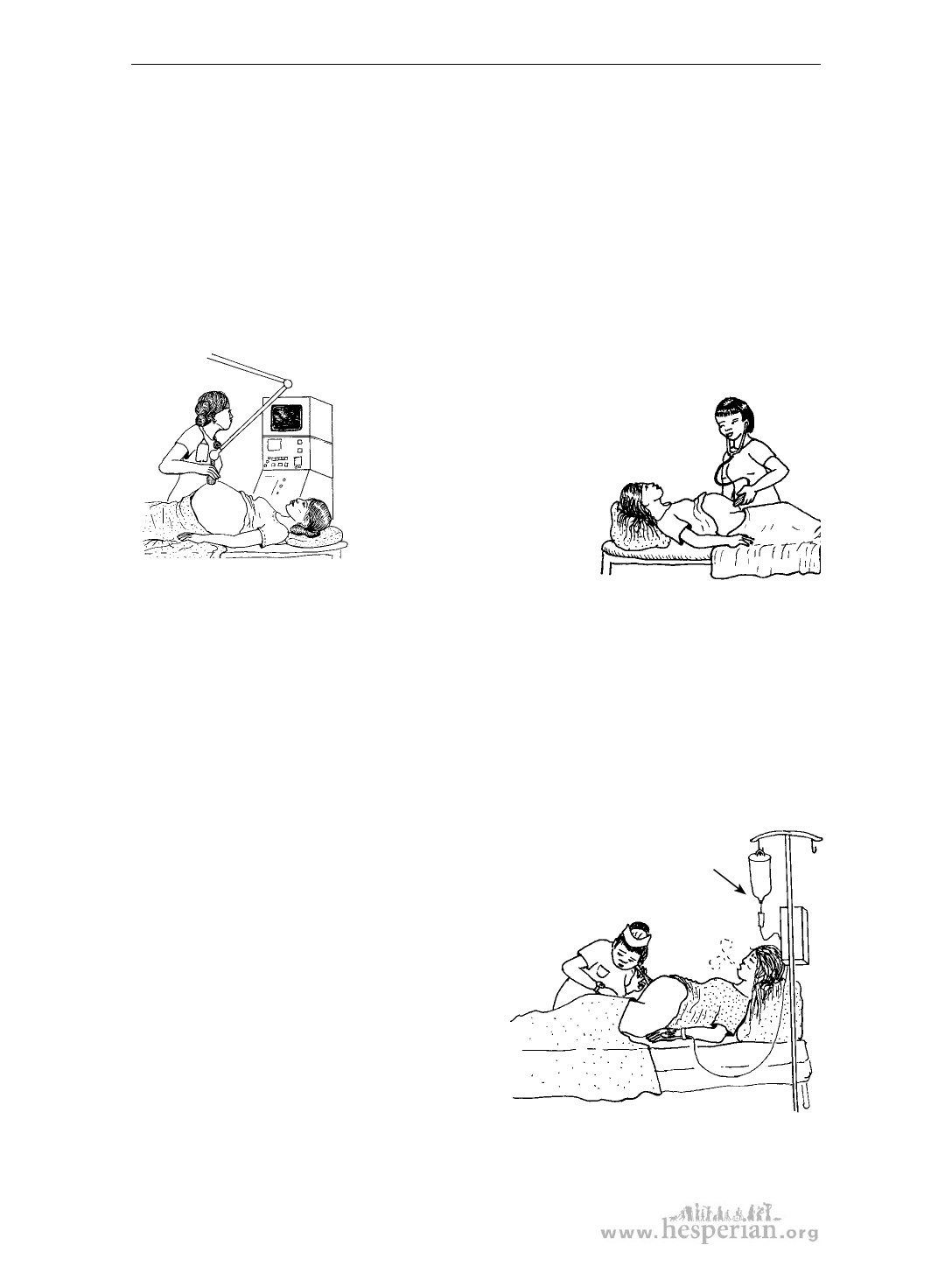
Chapter 24: Getting medical help
Lab tests
Laboratories have tools, such as microscopes, and people who are trained to test
blood, urine, stool, and tissue for sicknesses and other health conditions.
Sometimes a lab test is the only sure way to know what is causing a problem.
For example, lab tests can show you if a woman has anemia, a bladder infection,
or HIV.
Sonograms, Dopplers, and x-rays
Some medical centers have a machine that can take a
picture of a baby inside the womb. This is called a
sonogram or ultrasound. You might
want a sonogram to find out if a
woman is pregnant with twins
or if her baby is breech.
An ultrasound
fetoscope (Doppler)
makes the baby’s heart
easier to hear but does not
take a picture.
Another machine uses x-rays to take pictures of a person’s bones inside of her
body. This can show you if a bone is broken. X-rays cause damage to cells inside
the body. A few x-rays will probably not cause problems, but being x-rayed many
times can lead to cancer. Pregnant women should never be x-rayed unless it is
absolutely necessary. If a pregnant woman needs an x-ray, her belly must be
covered by a lead apron to protect the baby.
Medicines
A careful and well-trained doctor in a well-equipped
medical center can give medicines that would not be safe at
home. For example, midwives should never give oxytocin
at home to start or strengthen a labor. But oxytocin can
be given safely in a medical center where the mother
and baby can be monitored closely, and where the
baby can be born quickly by surgery
if something goes wrong. If a woman has
been in labor for too long (see page 186),
oxytocin given at a medical center may
help her deliver the baby.
oxytocin
drip
At a medical center or hospital, you may
also be able to get medicines for a sick
baby. Medicines are often too dangerous With careful monitoring and access to
or difficult to give to a baby at home.
surgery, oxytocin can be safely given in an IV.
434
A Book for Midwives (2010)